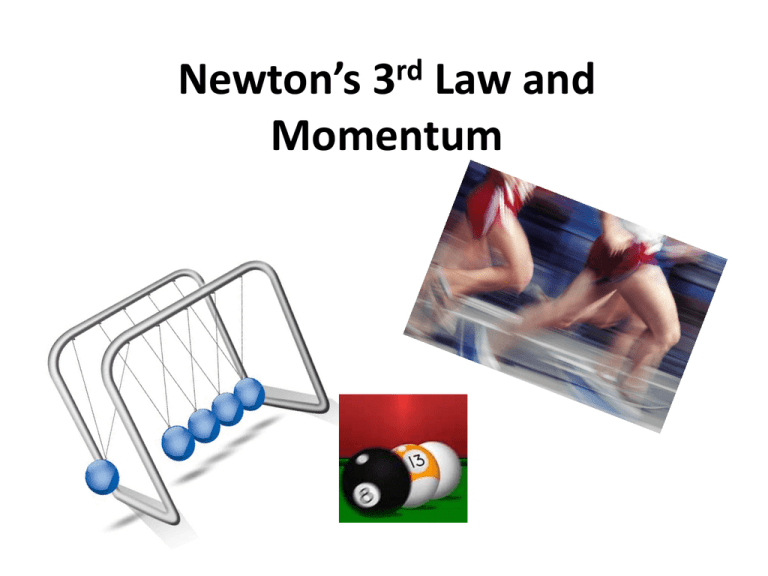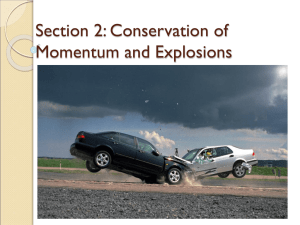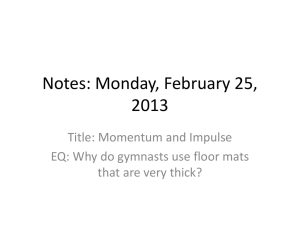Newton*s 3rd Law and Momentum
advertisement

rd 3 Newton’s Law and Momentum Newton’s 3rd Law When one object exerts a force on a second object, the second object exerts a force on the first that is equal in strength and opposite in direction. Action and Reaction • Another way of stating Newton’s 3rd Law is “to every action force there is an equal and opposite reaction force”. • Example – You exert a downward force on a trampoline. The trampoline exerts an equal force upward on you. Action and Reaction Forces Don’t Cancel! • Action and reaction forces work on different objects, so they are not balanced. Example – A swimmer pushes the water. She “acts” on the water. The water “reacts” by moving and pushing her forward. Momentum • Momentum – how much force is needed to change an object’s motion. • Depends on an object’s mass and velocity • Momentum is given the symbol p. Momentum Equation p = mv p = momentum in kg * m/s m = mass in kg v = velocity in m/s Just like velocity, momentum has size and direction! Example Momentum Problem At the end of a race, a sprinter with a mass of 80 kg has a speed of 10 m/s. What is the sprinter’s momentum? Force and Changing Momentum • If you catch a baseball, your hand might sting (even with a glove). This is because the baseball exerted a force on your hand when it came to a stop and its momentum changed. • This can also be calculated! Calculating the Force Using Momentum F = (mvf – mvi) / t F = force in N mvf = final momentum in kg * m/s mvi = intital momentum in kg* m/s t = time Example of Calculating Force Using Momentum What is the force exerted by a catcher’s glove on a 0.15 kg baseball moving at 35 m/s that is stopped in 0.02 s? Law of Conservation of Momentum • The momentum of an object does not change unless it’s mass, velocity, or both change. • Momentum can be transferred from one object to another. • Example – A bowling ball traveling down the lane has momentum. That momentum is transferred to the pins as the ball strikes the pins.







